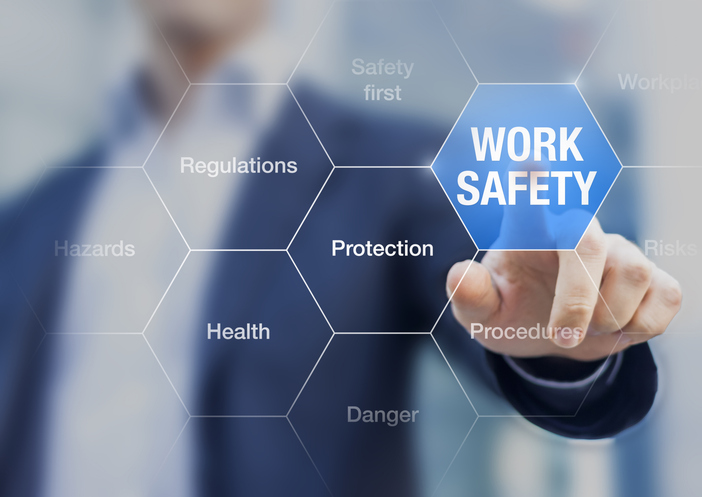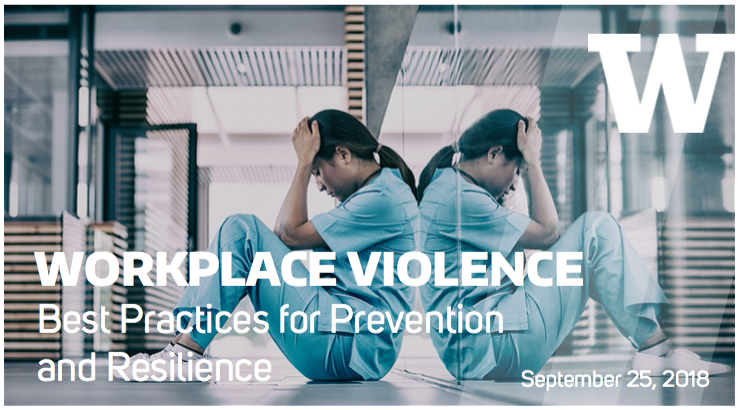Crucial Guidelines for California Workplace Violence Prevention: A Comprehensive Method
Crucial Guidelines for California Workplace Violence Prevention: A Comprehensive Method
Blog Article
The Role of Employee Training and Recognition in Enhancing Office Violence Avoidance Initiatives Across Various Industries
The assimilation of employee training and understanding into workplace physical violence prevention campaigns is increasingly recognized as a basic facet of business safety and security across diverse markets. By carrying out targeted training programs, services can properly encourage their labor force to recognize and attend to potential hazards before they intensify. The performance of these efforts frequently pivots on numerous critical variables that differ by field, raising important inquiries regarding the flexibility of training techniques and their real-world impact. Understanding these nuances may disclose approaches that can dramatically boost security procedures and worker confidence in high-risk settings.
Significance of Training Programs
In today's vibrant workplace, the relevance of training programs can not be overemphasized, particularly in the context of workplace violence avoidance. These programs function as a fundamental component in growing a secure and risk-free office society. By outfitting staff members with the understanding and abilities required to identify, minimize, and reply to prospective risks, organizations can promote a setting that prioritizes security and wellness.
Efficient training programs do greater than simply instruct; they equip staff members to identify warning indicators of violence, understand the protocols for reporting incidents, and develop methods to de-escalate prospective conflicts. Moreover, they impart a sense of cumulative duty among team, motivating proactive participation in preserving a secure office.
Investment in training not just boosts employee awareness however additionally demonstrates a company's dedication to protecting its workforce. This aggressive strategy can bring about minimized incidents of work environment physical violence, lower absenteeism, and enhanced staff member morale. Eventually, thorough training programs are indispensable to developing a resilient organizational culture that values safety and security and advertises a healthy and balanced workplace, consequently lowering the threat of violence and its connected effects.
Key Parts of Effective Recognition
A thorough recognition program encompasses numerous key components that are necessary for successfully preventing workplace physical violence. Clear interaction of policies and procedures associated to office violence is vital. Employees have to be educated about the company's stance on physical violence and the details methods in area for reporting incidents.
Second, training sessions must integrate reasonable scenarios that staff members may encounter. This useful technique assists workers identify advising indicators of possible violence and outfits them with the needed skills to de-escalate stressful circumstances. Third, fostering a supportive office culture is essential; employees should feel encouraged to speak out without fear of revenge.
Furthermore, ongoing education is necessary to maintain awareness relevant and fresh. Normal refresher courses and updates on arising threats can boost employees' alertness and readiness. Integrating comments devices permits staff members to share their experiences and insights, which can lead to continual improvement of recognition initiatives. By incorporating these components, companies can develop a durable framework for stopping workplace physical violence, ultimately adding to a safer and more efficient atmosphere for all workers.
Industry-Specific Training Methods
Efficient office physical violence prevention training should be tailored to the one-of-a-kind challenges and risks faced by particular markets. For circumstances, health care atmospheres call for training that deals with the high likelihood of encounters with hostile individuals or site visitors. Programs ought to concentrate on de-escalation techniques, acknowledging warning indications of potential violence, and ensuring staff understand the relevance of reporting events.
In comparison, retail setups might encounter various dangers, such as robbery or client conflicts. Training in these settings should highlight situational understanding, action protocols during emergencies, and the significance of safeguarding money and prized possessions.
Production and building markets offer their very own threats, frequently linked with social disputes or unsafe working conditions. Training in these sectors need to consist of methods for problem resolution, promoting a society of security, and urging open interaction amongst staff members.
Additionally, corporate offices may call for training focused on avoiding harassment and bullying, promoting a respectful office culture, and carrying out clear coverage systems. Each industry should not just acknowledge its particular susceptabilities yet also adjust training materials to resonate with the labor force properly, making sure that employees really feel equipped and equipped to manage possible terrible situations.
Measuring Educating Performance
Reviewing the effect of workplace violence prevention training is important for making certain that staff members are effectively prepared to take care of prospective risks. To accurately determine training effectiveness, companies ought to execute both quantitative and qualitative evaluation methods. Pre- and post-training studies can gauge changes in worker knowledge, perspectives, and behaviors worrying office physical violence. These check it out surveys must concentrate on particular training see goals to guarantee positioning with the organization's objectives.
In addition, sensible evaluations, such as role-playing circumstances or simulations, can give insights right into how well employees apply discovered skills in real-life situations. Keeping an eye on incident reports before and after training can also work as an indicator of performance, as a reduction in events might mirror better staff member readiness.
Furthermore, responses from individuals ought to be methodically collected to recognize locations for renovation in training web content and delivery. Carrying out follow-up analyses at normal intervals aids suffer awareness and enhances training principles over time - california workplace violence prevention. By employing a detailed approach to determining training efficiency, companies can guarantee that their office physical violence avoidance campaigns foster a much safer environment and improve general worker well-being
Structure a Society of Safety And Security

Educating plays a critical role in this social change. Regular, extensive training sessions educate employees about recognizing caution signs of workplace violence and the suitable actions. Urging open interaction allows workers to voice problems without fear of vengeance, advertising cumulative duty for security.
In addition, integrating security into daily procedures makes certain that it becomes a shared worth as opposed to a mere conformity issue. This includes regular security drills, updates on policies, and comments devices that involve workers in security discussions and renovations.
Ultimately, a durable society of security not only alleviates the threats of workplace violence but likewise enhances staff member spirits and performance. By cultivating a setting where security is a basic top priority, companies can this article produce resilient workplaces that sustain both specific wellness and collective success.
Conclusion
In final thought, employee training and recognition are crucial parts in the prevention of office violence throughout different industries. Efficient training programs, tailored to details industry requirements, enhance staff members' capability to react and recognize to potential dangers.

Routine, extensive training sessions educate staff members regarding recognizing warning indicators of work environment physical violence and the proper responses.In verdict, employee training and understanding are important components in the avoidance of office violence across different industries.
Report this page